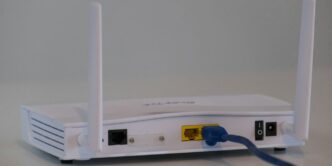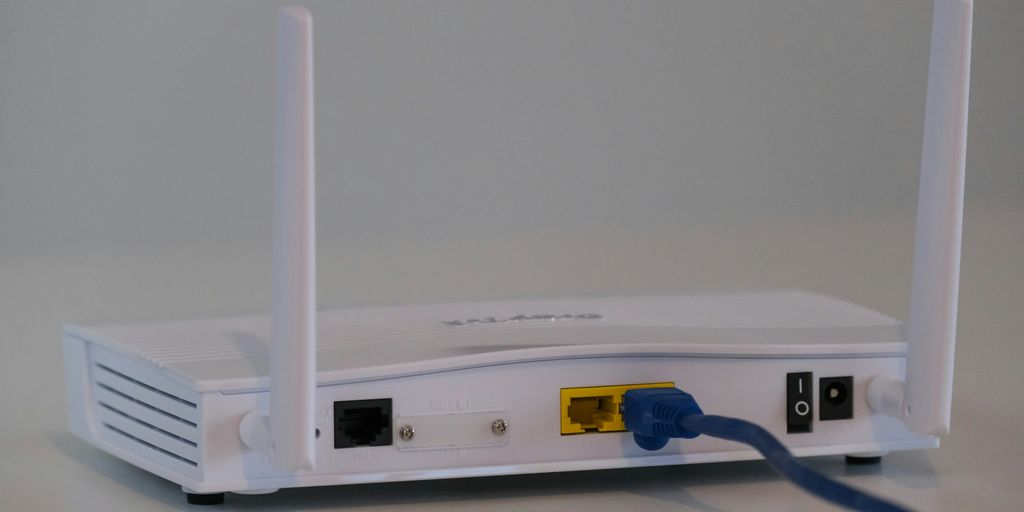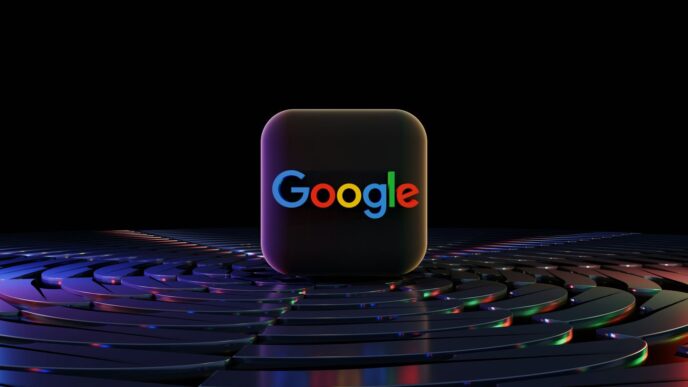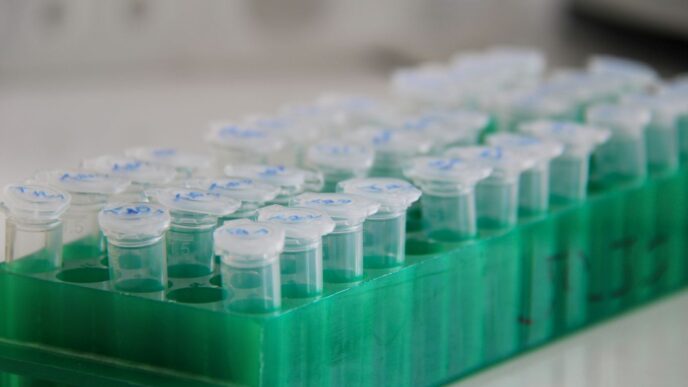In today’s fast-moving world, technology plays a big part in many industries, and healthcare is no different. One key piece of tech that has changed healthcare is Wi-Fi. This article will look at how important Wi-Fi is in modern healthcare, its benefits in medical places, the devices it helps, and what’s next for Wi-Fi in the healthcare world. We’ll explore how Wi-Fi in healthcare is making things better for everyone.
Key Takeaways
- Wi-Fi helps healthcare workers get to patient records and other important information quickly. This helps them make good choices about patient care.
- Wi-Fi makes it easy for healthcare staff to talk to each other right away. They can share info and work together on patient plans.
- Many medical devices now use Wi-Fi. This includes things that watch patients’ health from far away and systems that keep track of medical records.
- Keeping Wi-Fi networks safe in hospitals is a must. This means protecting patient information with strong security steps.
- The future of Wi-Fi in healthcare looks bright, with faster connections and more smart devices helping patients from anywhere.
The Indispensable Role of Wifi in Healthcare
It’s hard to imagine a modern hospital without Wi-Fi. It’s not just about patients streaming movies; it’s the backbone of so many critical functions. Wi-Fi provides the connectivity that allows healthcare professionals to access information, communicate, and use advanced technologies, ultimately impacting patient care.
Seamless Connectivity for Critical Data Access
Think about it: doctors need to pull up electronic health records (EHRs) instantly, nurses need to update charts in real-time, and specialists need to review medical images from anywhere in the hospital. Wi-Fi makes all of this possible. Without it, we’d be back to paper charts and delayed decisions. The ability to quickly access and share data is a game-changer. It’s not just about convenience; it’s about making sure the right information is available at the right time, which can literally save lives.
Real-Time Communication Among Healthcare Professionals
Wi-Fi enables instant communication between doctors, nurses, and other staff. This means quicker consultations, faster responses to emergencies, and better coordination of care. Imagine a surgeon needing a quick opinion from a cardiologist during a procedure – Wi-Fi makes that immediate connection possible. It’s like having a virtual team huddle available at any moment. This improved communication translates to better patient outcomes and a more efficient workflow for healthcare providers.
Facilitating Advanced Medical Technologies
From remote patient monitoring to sophisticated diagnostic equipment, many of today’s medical technologies rely on Wi-Fi. Wearable devices can transmit vital signs to doctors in real-time, allowing for continuous monitoring and early detection of problems. Medical imaging devices can quickly send large files to specialists for review. Telemedicine allows patients to consult with doctors from the comfort of their homes. All of these advancements are powered by Wi-Fi, expanding access to care and improving the quality of treatment.
Transforming Patient Care Through Wifi

Wifi isn’t just about checking email anymore; it’s seriously changing how healthcare works. It’s making things easier for both patients and healthcare workers. Let’s look at how:
Enhanced Patient Engagement and Education
Wifi lets patients be more involved in their own care. Think about it: instead of just sitting around, patients can use tablets to learn about their conditions, watch videos about treatments, and even communicate with their doctors through patient portals. This makes them feel more in control and helps them understand what’s going on.
Personalized Care Delivery with Wifi-Enabled Devices
Wifi-enabled devices are a game-changer. Wearable monitors can track vital signs and send data straight to doctors. This means healthcare can be tailored to each person’s needs. For example, someone with diabetes can have their blood sugar constantly monitored, and alerts can be sent if something’s not right. It’s like having a personal health assistant.
Streamlining Workflows and Reducing Errors
Wifi helps hospitals run smoother. Doctors and nurses can quickly access patient records, order tests, and prescribe medications electronically. This cuts down on paperwork and reduces the chance of mistakes. Plus, real-time communication means everyone’s on the same page, leading to better, faster care. It’s all about making things more efficient so healthcare workers can focus on what matters most: the patients.
Key Benefits of Wifi in Healthcare Facilities

Wifi in hospitals isn’t just a nice-to-have anymore; it’s really important for how things run and how well patients are taken care of. It touches pretty much everything, from keeping track of supplies to letting doctors talk to each other quickly. Let’s look at some of the big wins you get with good wifi.
Improved Operational Efficiency
Wifi helps make things run smoother in a hospital. Think about it: nurses can update patient charts on the spot with a tablet, instead of running back to a computer station. Doctors can pull up X-rays instantly, no more waiting for films. This all adds up to less wasted time and more focus on patients. Plus, things like inventory management become way easier when everything is connected. You can track supplies in real-time, so you don’t run out of important stuff.
Significant Cost Savings
Wifi can actually save hospitals money. Less paperwork means less money spent on paper, ink, and storage. Faster communication cuts down on wasted time, which translates to lower labor costs. And when you can monitor patients remotely, you might be able to reduce the number of people who need to stay in the hospital, which is a big expense. Here’s a quick look at potential savings:
| Area | Savings |
|---|---|
| Paper Reduction | $5,000 – $10,000 per year |
| Reduced Labor | $10,000 – $20,000 per year |
| Remote Monitoring | $2,000 – $5,000 per patient (where applicable) |
Enhanced Patient Care and Outcomes
Ultimately, the biggest benefit of wifi is better care for patients. Doctors and nurses can get the information they need, when they need it, which helps them make better decisions. Patients can use telemedicine services to talk to their doctors from home, which is great for people who have trouble getting to the hospital. Plus, things like electronic prescribing systems can help prevent mistakes with medications. All of this leads to healthier patients and better outcomes. Here are some ways wifi improves patient care:
- Faster access to medical records
- Improved communication between healthcare providers
- Remote monitoring of patients’ conditions
- Reduced medication errors
- Better patient engagement through educational resources
Wifi-Enabled Devices Revolutionizing Healthcare
Electronic Health Records and Virtual Collaboration
Okay, so think about how clunky things used to be. Paper charts everywhere, doctors trying to track down information, and nurses running around like crazy. Now, with electronic health records (EHRs), it’s a different story. Everything is digital, accessible, and (hopefully) secure. This means doctors can pull up patient histories in seconds, check for allergies, and see lab results without having to make a million phone calls. Plus, it makes virtual collaboration way easier. Specialists can chime in on cases from anywhere, and teams can coordinate care more effectively. It’s not perfect, of course. There are still issues with different systems not talking to each other, but it’s a huge step up from the old days.
Remote Patient Monitoring and Telemedicine
Remote patient monitoring? It’s kind of a game-changer. Imagine being able to keep tabs on someone’s heart rate, blood pressure, or glucose levels from their own home. That’s what telemedicine services let you do.
Here’s a quick breakdown of the benefits:
- Convenience: Patients don’t have to trek to the doctor’s office for every little thing.
- Early Detection: Problems can be spotted earlier, leading to faster intervention.
- Cost Savings: Fewer hospital readmissions and emergency room visits.
It’s especially great for people with chronic conditions or those who live in rural areas where access to healthcare is limited. Sure, there are challenges, like making sure everyone has the right equipment and a reliable internet connection, but the potential is huge.
The Internet of Medical Things (IoMT) Integration
Okay, the Internet of Medical Things (IoMT) sounds super futuristic, right? But it’s already here, and it’s changing how healthcare works. Basically, it’s all about connecting medical devices and systems to the internet so they can share data. Think about it: smart beds that automatically adjust to a patient’s needs, wearable devices that track vital signs, and even medication dispensers that remind people to take their pills.
Here’s what IoMT brings to the table:
- Better Data: More data means better insights into patient health.
- Improved Efficiency: Automating tasks frees up healthcare professionals to focus on patient care.
- Personalized Treatment: Tailoring treatments to individual needs based on real-time data.
Of course, security is a big concern. We need to make sure all this data is protected, but if we can do that, IoMT has the potential to revolutionize healthcare.
Addressing Security Concerns in Hospital Wifi Networks
It’s no secret that hospitals are prime targets for cyberattacks. All that sensitive patient data floating around makes them a goldmine for hackers. So, how do we keep those digital bandits out of our healthcare systems? It’s a tough job, but someone’s gotta do it. Let’s break down the key areas we need to focus on.
Implementing Robust Cybersecurity Measures
The first line of defense is a strong cybersecurity posture. Think of it like building a digital fortress around the hospital’s network. This means using things like firewalls, intrusion detection systems, and antivirus software. But it’s not just about the tools; it’s about how you use them. Regular security audits are a must to find any weak spots before the bad guys do. We also need to keep all software and systems up to date with the latest security patches. It’s like giving your fortress a fresh coat of armor every so often. And don’t forget about training! Staff need to know how to spot phishing emails and other scams. A well-trained team is one of the best defenses against cyber threats. For guest Wi-Fi, make sure it’s segmented from the internal networks.
Protecting Sensitive Patient Information
Patient data is the crown jewel of any hospital network, and protecting it is non-negotiable. Encryption is key here. It scrambles the data so that even if someone manages to intercept it, they can’t read it. Multi-factor authentication adds another layer of security by requiring users to verify their identity in multiple ways. Think of it as having multiple locks on the door. Access controls are also important. Not everyone needs access to all patient data. Limit access to only those who need it for their job. And don’t forget about data loss prevention (DLP) tools. These can help prevent sensitive data from leaving the hospital network. It’s all about creating a secure environment where patient information is safe and sound. Strong authentication protocols are a must.
Ensuring Regulatory Compliance
Hospitals aren’t just responsible for protecting patient data; they’re also legally obligated to do so. Regulations like HIPAA set strict standards for data privacy and security. Failing to comply can result in hefty fines and other penalties. So, it’s important to understand the regulations and implement policies and procedures to meet them. This includes things like conducting regular risk assessments, developing incident response plans, and providing employee training. Compliance isn’t just a checkbox; it’s an ongoing process that requires constant vigilance. It’s about creating a culture of security where everyone understands their responsibilities and takes data protection seriously. Using an ACT internet connection can help with compliance by providing a secure and reliable network infrastructure.
Optimizing Wifi for Medical Devices
It’s no secret that hospitals are packed with tech these days. From smart beds to fancy monitors, everything seems to be connected. But all this connectivity puts a strain on the Wi-Fi, especially when it comes to medical devices. Making sure these devices work smoothly is super important for patient care. Let’s look at some of the challenges and how to tackle them.
Managing High Device Density and Interference
Hospitals are full of devices – smartphones, tablets, infusion pumps, you name it. All these devices create a lot of radio frequency (RF) interference, especially on the 2.4 GHz band. Think of it like trying to have a conversation in a crowded room – it’s hard to hear! This interference can cause delays, dropped connections, and weak signals, which can be a big problem when you’re dealing with critical patient data. Hospitals are increasingly moving towards the 5 GHz band and even Wi-Fi 6E (which uses the 6 GHz band) to avoid this congestion.
Addressing Latency and Roaming Challenges
Latency, or delay, is a major headache for real-time applications like patient monitoring and telemedicine. Imagine a doctor trying to perform a remote consultation with a laggy video feed – not ideal! Roaming is another issue. When a nurse moves a medical cart from one part of the hospital to another, the device needs to seamlessly switch between Wi-Fi access points without losing connection. This requires a well-designed network and devices that can handle fast roaming. Here’s a quick look at how latency can impact different applications:
| Application | Acceptable Latency | Impact of High Latency |
|---|---|---|
| Patient Monitoring | < 50 ms | Delayed alerts, inaccurate readings |
| Telemedicine | < 100 ms | Choppy video, difficulty communicating |
| Remote Surgery | < 20 ms | Loss of precision, potential safety risks |
| EHR Data Transfer | < 200 ms | Slow access to patient information, workflow disruptions |
Power Consumption Considerations for Battery-Operated Equipment
Many medical devices, like portable monitors and infusion pumps, run on batteries. Constantly searching for and maintaining a Wi-Fi connection can drain those batteries pretty quickly. Frequent recharging can disrupt things, which is the last thing you want in a hospital. Optimizing Wi-Fi settings for low power consumption is key, but it’s a balancing act. You don’t want to sacrifice connectivity or performance just to save battery life. Ideally, medical devices should have Wi-Fi connectivity that’s designed to be power-efficient without compromising functionality.
The Future Landscape of Wifi in Healthcare
It’s interesting to think about where Wi-Fi is headed in healthcare. It’s not just about faster internet; it’s about changing how care is given and received. I think we’re on the verge of some pretty big changes.
Leveraging 5G Networks for Faster Connections
5G is a game-changer. It’s not just faster Wi-Fi; it’s a whole new level of connectivity. Think about it: quicker downloads of huge medical images, smoother video calls for telehealth, and more reliable data streaming from remote monitoring devices. It’s going to make a real difference, especially in rural areas where internet access is spotty. The possibilities are pretty exciting.
Advancements in AI and Machine Learning
AI and machine learning are already making waves, but with better Wi-Fi, they’ll be even more powerful. Imagine AI algorithms analyzing patient data in real-time to predict health issues or personalize treatment plans. This needs fast, reliable connections to work well. It’s about using data to make better decisions, and that requires a strong Wi-Fi foundation. I think AI in healthcare will become commonplace.
Expanding Telehealth and Remote Monitoring Capabilities
Telehealth is here to stay, and it’s only going to get bigger. With better Wi-Fi, we can expect more sophisticated remote monitoring. Think wearable sensors that track vital signs, video consultations with specialists, and even remote robotic surgery. It’s about bringing healthcare to people, wherever they are. The convenience and accessibility are huge, and it’s all powered by reliable Wi-Fi. I think telehealth services will become more accessible.
Conclusion
So, what’s the big takeaway here? Wi-Fi in healthcare isn’t just a nice extra; it’s really important. It helps doctors and nurses do their jobs better, makes things easier for patients, and even saves money. We’re talking about things like quick access to patient info, devices that talk to each other, and even getting medical help from home. Sure, there are some tricky parts, especially with keeping patient data safe. But as technology keeps getting better, Wi-Fi will only become more and more a part of how healthcare works. It’s all about making care smarter and more personal for everyone.
Frequently Asked Questions
Why is Wi-Fi so important in healthcare today?
Wi-Fi is super important in hospitals because it lets doctors and nurses quickly look up patient info, talk to each other, and use cool medical gadgets. It helps everything run smoothly and patients get better care.
How does Wi-Fi help patients directly?
Wi-Fi helps patients in many ways. They can use devices that track their health from far away, learn more about their sickness, and even talk to their doctor from home. It makes healthcare more personal and easier to get.
What are the main benefits of Wi-Fi for hospitals?
Wi-Fi helps hospitals work better by making it easier for staff to share information and use new tools. This means less paperwork, fewer mistakes, and more time for doctors and nurses to focus on helping people.
What kinds of medical devices use Wi-Fi?
Lots of medical tools now use Wi-Fi! Things like electronic health records, devices that watch patients from afar, and even smart machines in the operating room. They all connect through Wi-Fi to share important data.
How do hospitals keep patient information safe on Wi-Fi?
Keeping patient information safe is a big deal. Hospitals use strong security like special codes and checks to make sure only the right people can see sensitive data. They also follow strict rules to protect patient privacy.
What’s next for Wi-Fi in healthcare?
The future looks bright! With faster Wi-Fi like 5G and new smart tech, we’ll see more remote doctor visits, better ways to watch patients from home, and even smarter medical devices that can learn and help doctors make decisions.














